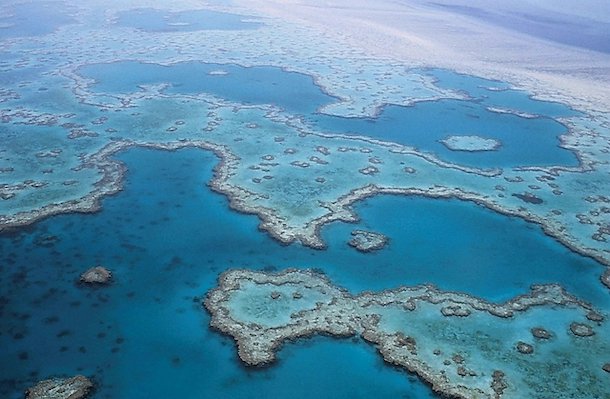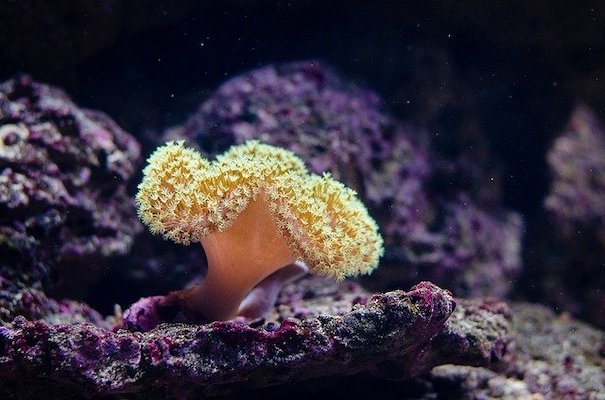AUSTRALIA
The Great Barrier Reef
By Charlotte McGlone
Chapel Hill, NC, United States
The Great Barrier Reef is one of the most amazing places on the planet. Located off the northeastern coast of Australia, it is the largest coral reef on earth. It is over 1,300 miles in length, and it can be anywhere from nine to 93 miles away from the mainland. There are some places where the reef is even 40 miles wide! That is huge!
What Is the Reef?
The Great Barrier Reef is made up of individual pieces of coral. There are over 400 different species on the entire reef. Although this may surprise you, coral are actually animals. They are invertebrates, which means they have no backbones like humans and most other mammals, birds, and reptiles.
Coral is made of individuals called polyps, which clump together in colonies that eventually build up to create reefs. They eat plankton and small fish. Each species has a different way of catching food and a specific role to fill in the reef ecosystem. Some have stinging tentacles, some have lures, and some have filters.
Other Inhabitants
The diversity of coral on the Great Barrier Reef is mirrored by the many types of animals that live on it. There are 30 species of whales, dolphins, and porpoises that spend a portion of their year on the reef. Seventeen different sea snakes, six types of turtle, and 215 types of birds also inhabit some part of the area, including the small islands that rise above the sea in some places. And of course, there are tons of kinds of fish—1,500 to be exact.
One of the most dangerous and exciting types of fish is the great white shark. This infamous creature makes an appearance among the smaller sharks that live on the reef. One of the characteristics that makes a great white shark so interesting is its size—up to 26 feet long. They weigh around 7,000 pounds. That’s really heavy! Their large size helps them swim quickly, reaching speeds of 35 miles per hour.
Their speed isn’t the only thing that makes them dangerous, as their bite can deliver 4,000 pounds of force. Despite looking scary, however, they are not the man-eaters that popular culture makes them out to be. Great white sharks are essential to the Great Barrier Reef ecosystem and perform many important functions that keep the reef healthy.

In Danger
Unfortunately, the splendor of the reef is in danger, like so many other natural wonders in our world. It is affected by many human-made problems, such as pollution and climate change. Experts estimate that since 1995, 50 percent of the coral population on the reef has disappeared.
Climate change is a problem for the reef, which needs to be between 77℉ and 84℉ to thrive. The warming of the ocean changes the specific temperature the reef needs. When temperatures rise, coral becomes stressed and turns white, a process called bleaching.
Additional harm to the reef comes from runoff from agriculture and industry. The Australian Institute of Marine Science estimates that 55,000 tons of nitrogen and phosphorous flow into the reef each year. Diseased reefs are marked by the proliferation of crown-of-thorns starfish, a coral predator.

Coral bleaching on the Great Barrier Reef. Photo Credit: Robert Linsdell via Wikimedia Commons
How to Help
Luckily, there are things that everyone can do to help maintain the health of the Great Barrier Reef. Supporting organizations that advocate for the reef is one way. Pursuing sustainable and environmentally safe practices at home can help the world at large as well.
We should make every effort to save such a natural wonder, and there are many ways you can get involved and learn from the amazing Great Barrier Reef!
Have a suggestion for this story? We’d love for you to submit it!


Blank
Blank
Math Resources
- If the width of the Great Barrier Reef (GBR) is 15 miles at its north end, and 150 miles at its southern end, what is the average width of the GBR? If the GBR is 1,300 miles long, how many square miles does it cover? How many football fields would that be?
- How long would it take a great white shark to travel from one end of the reef to the other if it traveled at 10 miles per hour?
- Agriculture currently use 17 million tons of pesticides and fertilizer, which is seven times greater than the amount used in 1970. How many million tons were used in 1970?
Extension Question
- What is one thing you could do to help save the Great Barrier Reef?
- What responsibility do the farmers who use pesticides have in maintaining the Great Barrier Reef?
Explore Further
- Why the Great Barrier Reef is on the World Heritage List
- Facts about the reef
- Information about the impact of land runoff
- Details about climate change’s effects on the reef
- Description of coral bleaching
- Video about efforts to restore the reef
Share Your Story
Write your own Global Math Story and send it to us!
Sorry, the comment form is closed at this time.